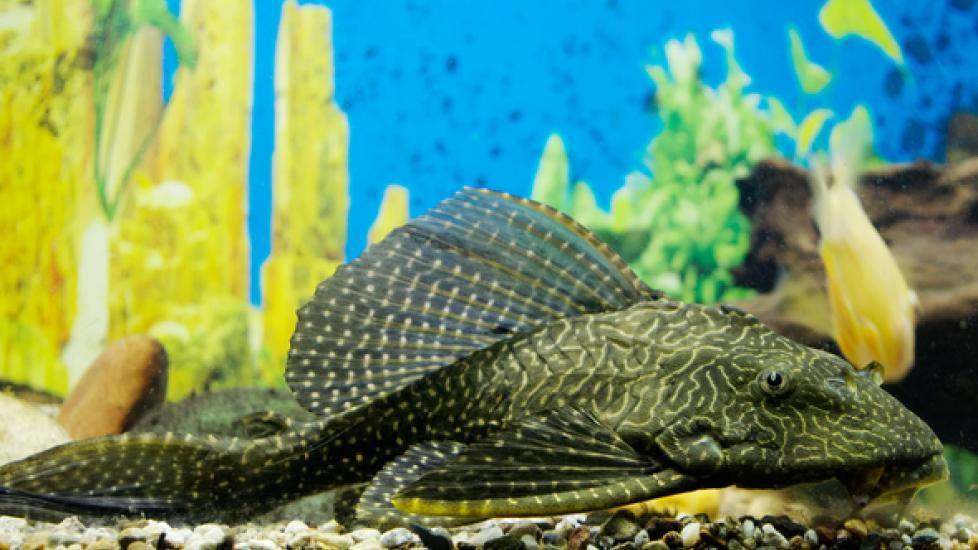Facts About Catfish
By Kali Wyrosdic
Though they may not sound exciting, catfish are incredible survivors as a breed of fish. They’re able to live and even thrive in temperatures from just above freezing to nearly 100 degrees Fahrenheit and can be found living inland and in the coastal waters of every continent minus Antarctica. Learn more interesting facts about catfish, including how to incorporate them into your aquarium, below.
Where Do Catfish Live?
Catfish are an extremely diverse group of ray-finned fish that get their nickname from their feline-looking whiskers, which are actually barbels that act as a defense mechanism (unlike other fish that have scales to defend them). Catfish can live in a number of conditions, with species that live in saltwater, freshwater and brackish water. Some catfish prefer stagnant water and others call rivers and streams with fast-moving currents their homes, it all depends. Some species of catfish are nocturnal(sleep during the day) while others are diurnal(active during the day).
Channel catfish, a categorization that includes more than 45 species, account for all the commercial food fish production in the United States. There are nearly as many regional nicknames for the fish as there are species. In the United States alone they’re known as mud cats, polliwogs, chuckleheads, big bullheads, shovelheads, scoopers and flatties, to name a few. While there are nearly 40 species of catfish in North America alone, only six have been cultured for or show potential for commercial production. Aside from that, certain species of catfish make excellent pet fish and aquarium mates.
What Do Catfish Eat?
Although the native catfish habitat varies drastically, all catfish love to eat, and despite popular belief, they are not all bottom-feeders. Catfish travel where the food is, whether that’s shuffling along on a riverbed or skimming the water’s surface looking for larger prey. Wild catfish have very diverse feeding behaviors, with some remaining strict scavengers and others preferring to swallow large fish and other prey whole. Some can be carnivores, herbivores, omnivores, or even limnivores (eating microorganisms within mud).
A catfish’s diet changes as it grows, with young catfish eating larvae and insects and mature catfish graduating to insects, snails, other fish and fish eggs. A few select species of catfish even like to eat things like wood and algae, while still more are parasitic and live off the blood of other fish, frogs, rodents and even aquatic birds.
Aquarium catfish are slightly different from their wild counterparts. While they do feed off of algae and other decaying organic material that settles to the aquarium floor, they need additional food to live and should be fed the same way as other pet fish.
How Big Do Catfish Grow?
It’s easy to find catfish in all different shapes and sizes, which is great news if you’re thinking about adding one or more to your aquarium. The three largest species of catfish are the Mekong giant catfish, the Wels catfish and the Piraiba catfish. One of the largest catfish ever recorded weighed in at nearly 700 pounds, while the smallest species of catfish reach just one centimeter in length. The size of a catfish depends on its species and environment.
Can I Add a Catfish to My Aquarium?
Catfish make an excellent addition to any aquarium because they help keep it clean. As far as aquarium catfish go, there are several species that hobbyists prefer; some of which remain small (like corydoras) while others grow larger (plecos and Columbian sharks, also called Jordan’s Catfish). Many pet catfish species tend to do well in groups or small schools and they even get along with some of the more aggressive species of fish, like betta fish. The type of catfish you pick for your aquarium depends on the size tank you have and the other types of fish in it.
Want to know more about catfish? Here are a few additional fun facts:
- A catfish has about 100,000 taste buds, and their bodies are covered with them to help detect chemicals present in the water and also to respond to touch.
- Some ancient cultures used to keep catfish in their latrine ponds as a natural way of getting rid of waste.
- The Asian walking catfish can actually pick itself up and “walk” across the ground with its front fins and tail. It will walk short distances when it needs to relocate to a different pool or body of water.
- Some species of catfish are able to breathe through their skin, which is why most species of catfish are lacking scales and have smooth, mucus covered skin.
- Catfish are one of a few fish that have an organ called the Weberian apparatus that they use to communicate with each other underwater. The Weberian apparatus also helps improve its hearing ability. Catfish make additional sounds by rubbing parts of their bodies together underwater.
Image: ShaunWilkinson / Shutterstock
